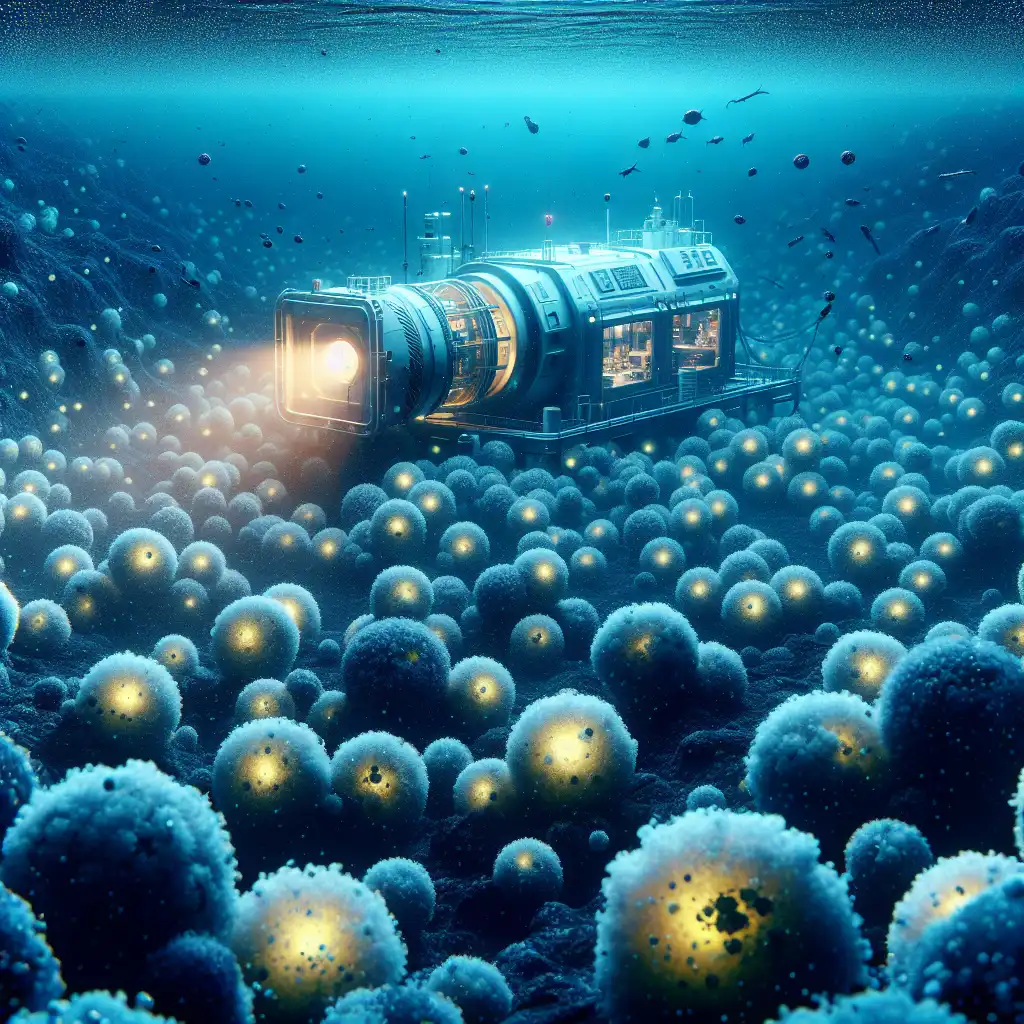In the depths of the Pacific Ocean, a mysterious source of oxygen has been discovered, challenging our current understanding of marine ecosystems and photosynthesis. This phenomenon, found in a region abundant with polymetallic nodules, could have significant implications for both biological research and environmental policy, particularly concerning deep-sea mining.
Table of Contents
ToggleIntroduction
In the vast, dark expanse of the Pacific Ocean, a surprising discovery has been made that could reshape our understanding of oxygen production on Earth. Researchers have identified a source of oxygen at the bottom of the ocean, a place where sunlight cannot reach and traditional photosynthesis is impossible. This breakthrough, published in the journal Nature Geoscience, raises intriguing questions about marine biology and the potential impacts of deep-sea mining.
The discovery was made in the Clarion-Clipperton Zone, an area known for its rich deposits of polymetallic nodules. These ancient, plum-sized formations may play a crucial role in catalyzing the splitting of water molecules, leading to oxygen production. This finding could not only deepen our understanding of how life began but also highlight the need for careful consideration of deep-sea mining activities in these regions.
A New Source of Oxygen
The Discovery
Researchers led by Andrew Sweetman, a sea-floor ecologist at the Scottish Association for Marine Science, first noticed something unusual during fieldwork in 2013. While studying sea-floor ecosystems in the Clarion-Clipperton Zone, they released a module that sank to the sea floor to conduct automated experiments. This module enclosed small sections of the sea floor and measured oxygen levels over several days. Surprisingly, instead of decreasing, the oxygen levels in these enclosed areas increased.
Initially, Sweetman attributed this anomaly to a sensor malfunction. However, repeated observations in subsequent expeditions during 2021 and 2022, using alternative measurement techniques, confirmed the phenomenon. This led to the realization that a new, previously unknown process was occurring 4,000 meters below the ocean surface.
The Role of Polymetallic Nodules
Polymetallic nodules, found abundantly in the Clarion-Clipperton Zone, appear to be at the heart of this mysterious oxygen production. These nodules may act as catalysts, facilitating the splitting of water molecules into oxygen and hydrogen. Laboratory experiments aboard the research vessel confirmed that samples containing these nodules did indeed produce oxygen, although the energy source driving this reaction remains unclear.
- Catalytic Hypothesis: The researchers measured voltages across the surface of the nodules and found differences up to 0.95 volts. While this is not sufficient to split water molecules on its own, it suggests that under certain conditions, these nodules could act similarly to batteries, potentially producing higher voltages.
Implications for Marine Life and Deep-Sea Mining
Impact on Marine Ecosystems
The discovery of this ‘dark oxygen’ source has significant implications for marine ecosystems, particularly those dependent on oxygen delivered by ocean currents. If these ecosystems rely on oxygen produced by polymetallic nodules, any disruption caused by deep-sea mining could have catastrophic effects.
- Ecosystem Dependency: Mapping areas of oxygen production before commencing mining activities could prevent the collapse of dependent ecosystems. This is crucial for preserving marine biodiversity and maintaining the ecological balance.
Potential for Industrial Applications
Understanding the mechanisms behind this oxygen production could also have practical applications. For instance, insights gained from studying these natural catalysts could help improve industrial processes, such as the development of more efficient catalysts for splitting water molecules in hydrogen production.
- Blueprint for Better Catalysts: By mimicking the natural processes observed in these nodules, scientists could develop new technologies that enhance energy production and storage, contributing to renewable energy solutions.
Unanswered Questions
What Powers the Reaction?
One of the most pressing questions is identifying the energy source driving the oxygen production. If the nodules were simply acting as batteries, they would have depleted their energy long ago. Therefore, researchers must explore other potential energy sources, such as geological or chemical processes occurring in the deep-sea environment.
- Energy Source Exploration: Further research is needed to understand the full range of reactions and energy exchanges taking place on the ocean floor. This could involve studying the interaction between nodules and surrounding sediments or the potential influence of deep-sea currents.
Broader Implications for Exoplanetary Research
The discovery also has implications beyond Earth. The presence of oxygen on other planets is often considered a potential indicator of life. However, if non-photosynthetic processes like those observed in the Clarion-Clipperton Zone can produce oxygen, interpretations of extraterrestrial oxygen signatures may need to be reevaluated.
- Caution in Exoplanetary Studies: Researchers should consider alternative explanations for oxygen presence when analyzing the atmospheres of exoplanets. This could prevent false assumptions about the existence of life based solely on oxygen detection.
FAQs
What are polymetallic nodules?
Polymetallic nodules are rock concretions on the sea bottom formed of layers of iron and manganese hydroxides around a core. They contain valuable metals like nickel, copper, and cobalt.
How was the new source of oxygen discovered?
The discovery was made during experiments in the Clarion-Clipperton Zone, where researchers observed unexpected increases in oxygen levels within enclosed sea-floor sections.
Why is this discovery significant?
This discovery challenges the traditional understanding of oxygen production and could have profound implications for marine biology, deep-sea mining, and industrial applications.
What role do polymetallic nodules play in oxygen production?
These nodules may act as catalysts, facilitating the splitting of water molecules into oxygen and hydrogen, although the exact mechanisms and energy sources are still under investigation.
How could this discovery impact deep-sea mining?
Understanding the ecological role of oxygen production in the Clarion-Clipperton Zone could inform mining practices, helping to prevent disruption of marine ecosystems.
Could this discovery affect the search for life on other planets?
Yes, the finding suggests that oxygen could be produced through non-photosynthetic processes, which means the presence of oxygen on other planets might not necessarily indicate life.
Conclusion
The discovery of a new source of oxygen production at the bottom of the Pacific Ocean is a groundbreaking development in marine science. It opens up new avenues for research into the origins of life, the functioning of deep-sea ecosystems, and the potential impacts of deep-sea mining. As we continue to explore these mysterious depths, it is crucial to balance scientific curiosity with environmental stewardship to protect the delicate and often unseen life forms that inhabit our oceans.
















